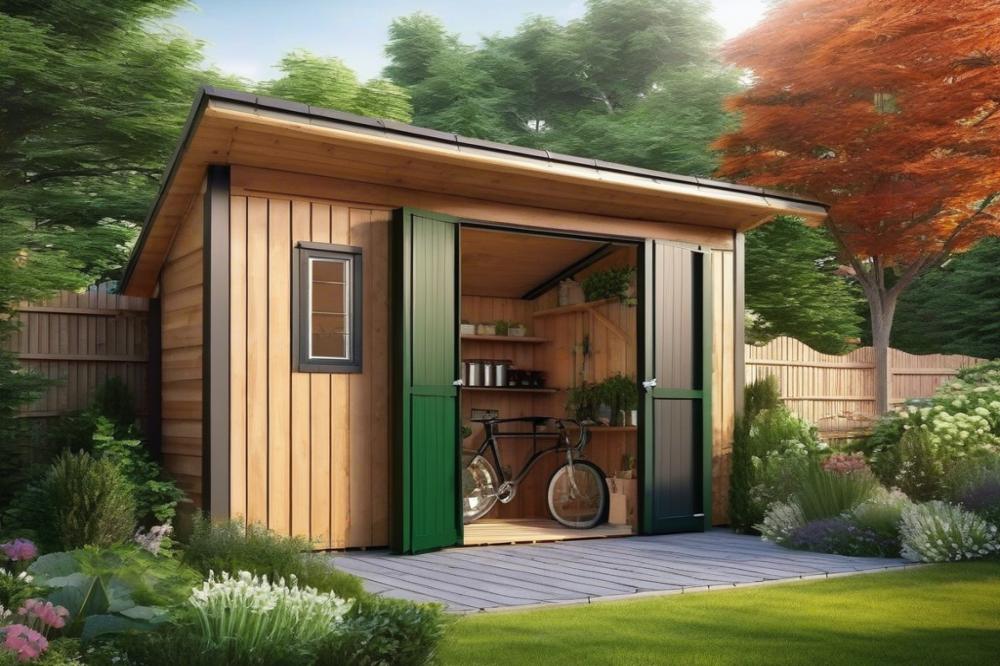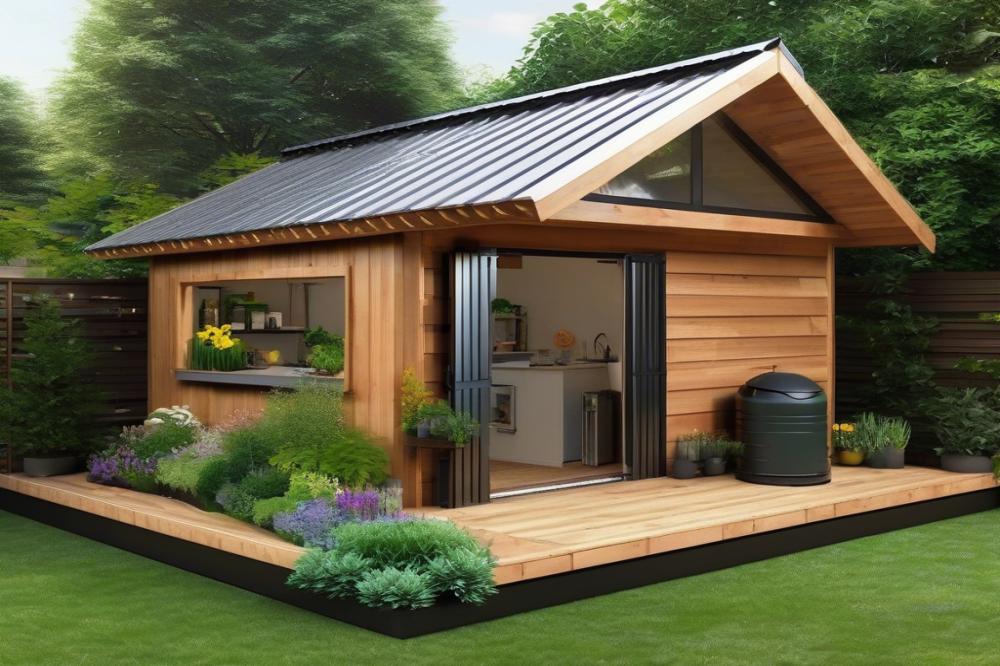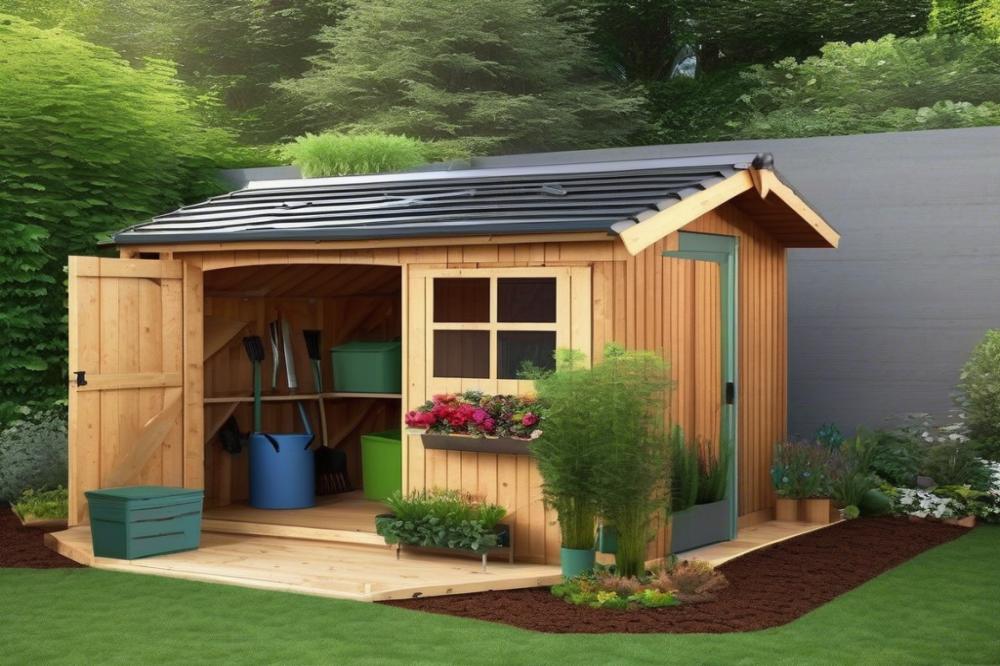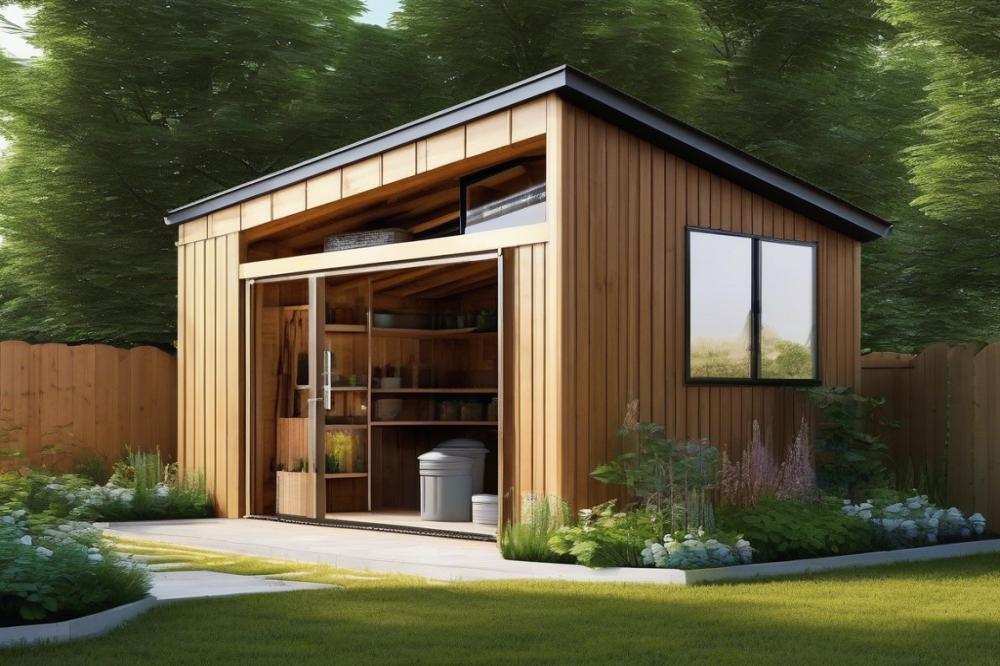Understanding Zero Waste Living
Zero waste living is more than an environmental trend. It represents a lifestyle choice that emphasizes reducing the amount of waste we create. Many people live in a way that minimizes their impact on the planet. The main aim is to divert materials from landfills and promote a circular economy. By adopting practices such as composting and using reusable items, individuals can greatly reduce their waste. This shift towards sustainability is vital as it helps combat climate change and conserves resources.
The Role of a Zero Waste Shed

A Zero Waste Shed embodies these principles through thoughtful design. The shed serves as a space where sustainable materials are used and creativity flourishes. It can provide critical functionality, such as storage for tools or a workspace for DIY projects. Incorporating elements like repurposed materials not only reduces waste but also offers a distinctive charm. Additionally, integrating features for rainwater harvesting and natural ventilation enhances energy efficiency.
Minimalism further enriches this concept. By designing a shed with less clutter, users can focus on what truly matters. Functional storage solutions can help organize items in a way that is practical yet stylish. This serves as a perfect backdrop for embracing an eco-friendly lifestyle. Ultimately, a well-designed shed can significantly contribute to sustainable practices within the home.
Understanding the Philosophy of Zero Waste Living

Zero waste living centers around a simple idea: reduce what you throw away. At its core, it encourages the use of resources in a way that minimizes waste. This philosophy aligns closely with minimalism, which advocates for living with less and focusing on what truly matters. Consider it a lifestyle choice that values sustainability and eco-friendly practices.
When designing a space like a shed, one must prioritize functional storage. This means thinking carefully about how to organize tools, supplies, and materials. Every item should have its own dedicated space. Efficient organization prevents clutter, which leads to better practices like composting or rainwater harvesting. A well-organized area can make these sustainable practices easier to implement.
DIY design plays a significant role in achieving sustainability. Building your own storage solutions allows for the use of repurposed materials. Instead of buying new, inventiveness can lead to unique structures that are both practical and eco-friendly. When people engage in DIY projects, they often become more connected to the materials they use and the waste they produce.
Energy efficiency is another key principle in zero waste living. Designing a shed that promotes natural ventilation reduces the need for artificial cooling or heating. Choosing sustainable materials not only benefits the environment but also enhances the durability of your space. Each decision you make contributes to a smaller carbon footprint.
Understanding these principles can make the journey towards minimalism and sustainability more manageable. The choices you make in your design will reflect your values. Each element, whether it’s about storage, energy use, or materials, will play a part in achieving a lifestyle with less waste.
Choosing Eco-Friendly Materials

When designing a shed for zero waste living, the choice of materials is essential. Eco-friendly options contribute to a smaller carbon footprint and promote sustainability. Sustainable materials include bamboo, recycled wood, and reclaimed metal. Bamboo, for example, grows rapidly and is a renewable resource.
Repurposed materials play a critical role in sustainable construction. Using items that already exist reduces waste and limits the demand for new resources. Salvaging old doors, windows, or pallets can give your shed character while being environmentally friendly. This approach aligns with principles of minimalism, focusing on function without excess.
Some people opt for DIY design projects, finding joy in crafting their spaces. Many recycled materials can be transformed into unique functional storage solutions. A shed made from reused resources not only saves money but also helps the planet. Incorporating salvaged materials adds history and charm to your structure.
Finishes and treatments used in construction also matter. Non-toxic options, like natural oils and plant-based stains, are safer for you and the environment. These finishes can help protect wood from decay without harmful chemicals. For better energy efficiency, proper insulation made from eco-friendly materials is crucial.
Natural ventilation is another consideration when selecting materials. It can be achieved through the strategic placement of windows. Choosing screens made from biodegradable fabrics helps maintain airflow while protecting from insects. This enhances the overall comfort of your shed.
Lastly, think about sustainable practices, such as composting and rainwater harvesting. These elements can be integrated into the design. Installing a green roof or using rain barrels can promote water conservation while enhancing the shed’s eco-friendly appeal. By carefully selecting materials and finishes, your zero waste shed can be both beautiful and practical.
Designing for Sustainability

Creating a shed that promotes zero waste living involves careful planning and design choices. Incorporating energy efficiency into your shed’s framework can lead to lower energy consumption and reduced utility bills. For instance, choosing eco-friendly, sustainable materials such as reclaimed wood or bamboo can ensure that the structure is both durable and environmentally sound.
Utilizing Natural Ventilation for Air Quality and Climate Control
Natural ventilation plays a crucial role in maintaining a healthy environment inside the shed. By designing windows that can be opened or incorporating vents, you can allow fresh air to flow throughout the space. This helps control the temperature, reducing the need for mechanical cooling systems. Additionally, consider placing the shed strategically to take advantage of prevailing winds, enhancing airflow even more.
Maximizing Light and Reducing Reliance on Electrical Lighting
Light is essential for any functional storage shed. Using skylights or large windows can flood the interior with natural light. This design choice decreases the need for artificial lighting during the day. Also, consider using lighter colors for walls and ceilings, as they reflect sunlight and brighten up the space. Incorporating repurposed materials like old windows not only adds character but can also assist in achieving optimal illumination.
Another tip is to embrace minimalism in your design. The fewer items you have, the less clutter you manage. Build smart storage solutions that fit your needs while keeping the space open and airy. For the eco-conscious, incorporating a composting area can also be beneficial. It provides a practical use for organic waste, aligning with the zero waste philosophy.
Beyond light, think about water. Rainwater harvesting systems can be integrated into the shed design. These systems collect and store rainwater for various purposes, such as watering plants or cleaning. Constructing these systems from inexpensive, sustainable materials can reduce water costs and lower environmental impact.
Overall, the blend of natural features and eco-friendly resources can lead to a truly sustainable living space. By focusing on these aspects, your shed can serve as a model for responsible living while supporting a zero waste lifestyle.
Integrating Functional Features
Overview of Composting Systems for Waste Reduction
Composting is a crucial part of waste reduction. A composting system can be simple or complex. Many people use small bins in their kitchens to collect food scraps. Others build larger compost piles outdoors. These systems turn organic waste into nutrient-rich soil. This process reduces landfill waste while enriching gardens. Consider options like worm bins or compost tumblers for efficient breakdown. Choose eco-friendly, sustainable materials that allow you to create an effective setup. When designing your shed, allocate space for a dedicated compost area. This area will help you remember to sort waste properly.
Implementing Rainwater Harvesting for Sustainable Water Use
Rainwater harvesting is a fantastic way to conserve water. Install a rain barrel to collect water from your shed’s roof. This water can be utilized for garden irrigation or plant care. In areas with frequent rainfall, this system can provide a substantial resource. Setting up a simple DIY design can easily manage this water collection. Adding a filter to purify the collected water is a smart move. Remember to check local regulations regarding rainwater harvesting to stay compliant. Building this feature into your shed design promotes sustainability and reduces reliance on municipal water systems.
Design Ideas for Multi-functional Storage Solutions
Effective organization can help maintain a clutter-free environment. Utilize repurposed materials to create practical storage. Shelving made from old crates or pallets can add character and function. Consider vertical storage solutions, which can maximize limited floor space. You can also implement hooks and pegboards to hang tools and supplies. Incorporating compartments for gardening supplies and crafting materials can improve access. The goal is to streamline your use of space while keeping everything easily reachable. Minimalism is key in such designs—essential items should be prioritized. Ensure your storage solutions blend seamlessly with the overall shed design. Each feature must contribute to the zero waste lifestyle you aim to embrace.
Optimizing Space for Zero Waste Practices
Designing a shed for zero waste living involves efficient use of space. A small footprint can be transformed into a functional area with smart planning. Consider your activities. Think about what you will store and how you will use each section. This helps in creating a layout that facilitates work without unnecessary obstacles.
Efficient Design Layout
To maximize the utility of your space, create zones. A gardening section may feature tools and planters, while a composting area effectively manages organic waste. Keep frequently used items within arm’s reach. This minimizes movement and encourages activity. Compact storage solutions can fit neatly into corners. Adjustable shelves can grow with your needs, accommodating various items.
Creative Storage Solutions
Utilizing eco-friendly, repurposed materials for storage can enhance your design. Wooden crates make excellent shelving units and can be stacked to save space. Modular containers also offer flexibility. By categorizing tools or supplies, you develop a systematic approach to your workspace. Remember to label everything. Clutter is a hurdle to zero waste, so reducing visual chaos can improve your efficiency.
Encouraging Minimalism
Focus on essential items. A minimalist shed encourages thoughtful consumption. Each piece should serve a clear purpose. Prioritize energy efficiency in your design to lower your environmental footprint. Including natural ventilation promotes air flow while keeping things fresh. Choose sustainable materials that reduce waste from the start. These practices contribute to an environmentally conscious atmosphere.
DIY design offers a chance to personalize your shed. Incorporating features like rainwater harvesting enhances sustainability while providing a resource for plants. Design choices should reflect a commitment to zero waste. Encourage habits that minimize excess. Your shed can be a model of efficient living through smart design and intentional choices.
Wrapping It Up
The significance of a Zero Waste Shed cannot be overstated. These structures are more than simple storage spaces; they represent a commitment to reducing waste and living more consciously. When designed with care, they encourage thoughtful resource use and inspire a shift towards a more sustainable lifestyle.
Readers should feel motivated to embrace eco-friendly practices in their shed design. Using sustainable materials is vital in this journey. Whether it’s reclaimed wood or recycled steel, every choice makes a difference. By integrating rainwater collection systems or composting setups, you amplify your contribution to the environment. Consider planting native plants nearby for added benefits. These not only beautify your space but also support local wildlife.
The broader impact of sustainable living extends well beyond individual actions. Collectively, small changes can lead to significant environmental benefits. Your shed can serve as a model for neighbors and friends, encouraging them to think differently about their own spaces. Every step towards sustainability fosters a sense of community. In the end, your efforts may inspire others to rethink waste and embrace a more eco-conscious way of life.
So, as you embark on designing your shed, remember the broader vision. Create a space that aligns with your values and supports zero waste principles. Your choices today can lay the groundwork for a healthier planet tomorrow.



